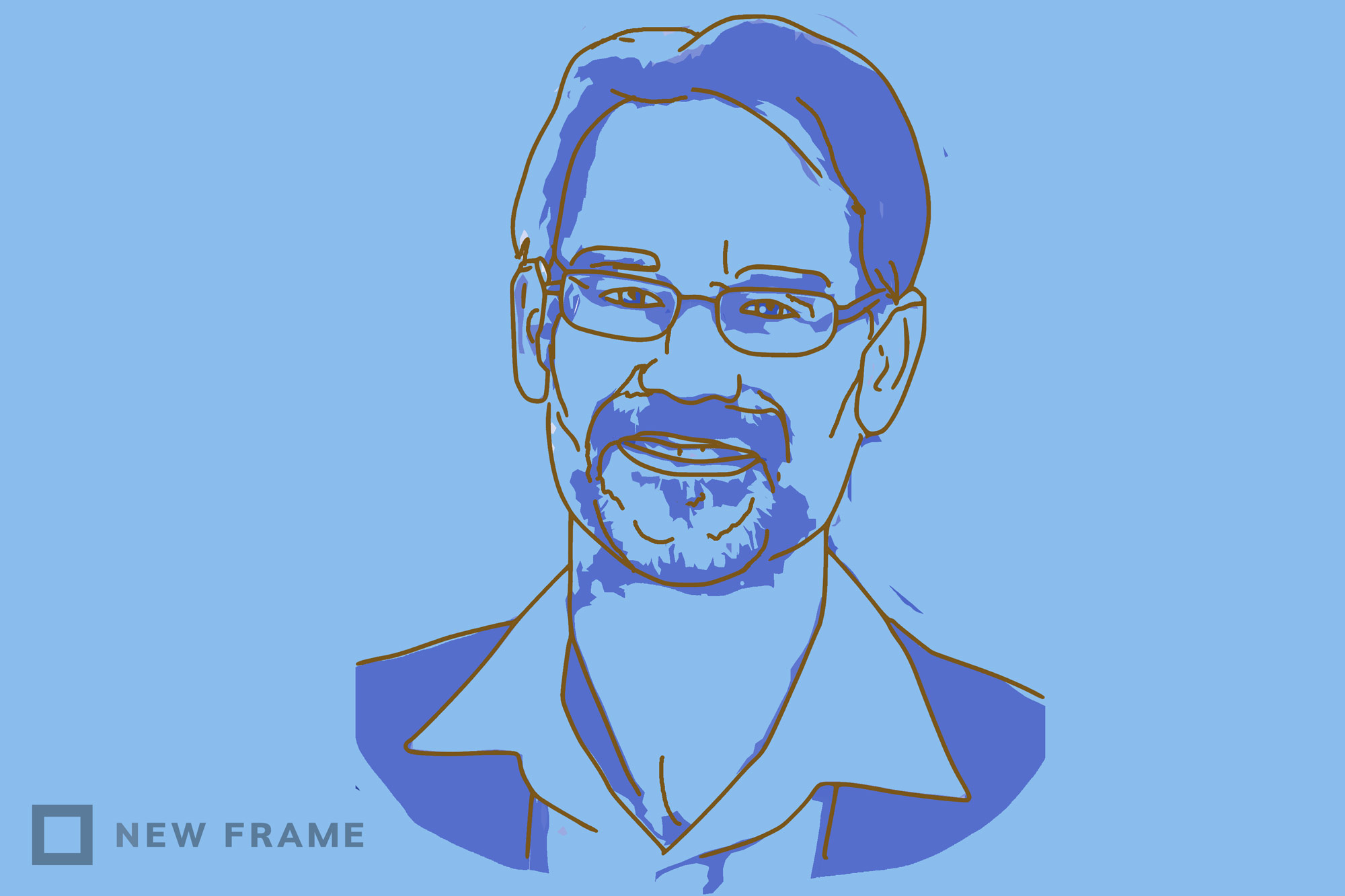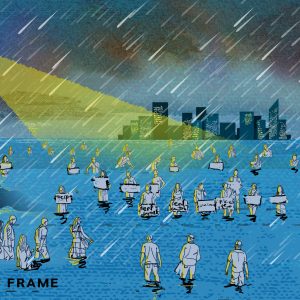The human tragedy of South Africa’s inequality
Inequality remains the developmental challenge of our time. To undo it, the policies that have failed us thus far will not be enough. This is the second forum in our New Frame, New Economy project.
Author:
17 May 2021

Colonialism and apartheid policy explicitly structured a fundamentally unequal South Africa. Spatially, they carved the country into areas of commercial farming dominated by whites, impoverished Bantustans for Africans, and urban areas where white people had near-exclusive monopoly and controlled all location decisions. This spatial planning undergirded systemic inequalities in the allocation of education, health and all other services.
It is hardly surprising, then, that post-apartheid South Africa launched with a level of income inequality in competition with Brazil as the highest in the world. The inequality between racial groups was higher than anywhere else.
This income inequality has not changed much since. And, while there are substantive inequality data and measurement debates, none contradict the fact that ours is a society that continues to generate extreme inequalities. In his 2015 Nelson Mandela Memorial Lecture, Thomas Piketty spoke of a South Africa that “is really at the top of the class, so to speak, and is in a way, way out of the experience that we can think of.”
We have no choice but to think of this situation and confront it.
The development challenge of our time
A global consensus has emerged over the past decade that inequality, even at levels far lower than South Africa’s, is an obstacle to both economic development and sustainable societies. Even multilateral agencies and business forums, including the World Bank, the International Monetary Fund and the World Economic Forum, now prioritise the issue of inequality. A large international literature and widely shared experiences now show how inequalities work to imbed social exclusion and increasingly marginalise the impoverished and even the nascent middle classes from growth.
Related article:
Inequalities constrain life possibilities and individual agency, and so limit the economic and social potential of societies. This is at the heart of understanding how and why economic growth greatly reduces poverty in some contexts but has limited benefits to impoverished people in many others, including nearly all African countries. The lack of inclusive growth, in turn, stifles the momentum of the growth process. It is for these reasons that inequality has become a key development challenge over the past decade.
To some extent, we have always known these things. But now, even the credit rating agencies flag the fact that persistent and extremely high inequality in South Africa impacts on our viability and sustainability as a society. It has to be confronted more systematically and more centrally in our economic policy, and in our national project.
The texture of South African inequality
So, is anybody getting ahead in South Africa? And who is falling behind?
Post-apartheid policy was expected to overcome inequality. South Africa has good data, and we now know a lot about the texture of our contemporary inequality. We know, for instance, that the momentum of history is not easy to overturn. This is shown most starkly by a number of studies that have used census data to map the levels of income, employment and access to education, health, water and electricity. Figure one is but one of the many maps showing that the deepest poverty and deprivation in contemporary South Africa is in the apartheid-era Bantustans.
Figure 1
But even in the better-off metropolitan areas there are extreme inequalities in all dimensions of life. Livelihood opportunities, physical infrastructure and municipal services are distributed unevenly across space; the worst situations in our cities, which are in the peripheral township areas, are also creations of apartheid planning. Where people live and work matters. To be confined spatially in poorly resourced and isolated places severely reduces life chances. It is hardly surprising that temporary labour migration, which separates parents from children, remains a persistent feature of African households needing to find sources of income. We have failed to transform apartheid’s geography and many of our inherited inequalities.
Related article:
A recent body of research tracks social mobility in South Africa to understand how life in the country has worked over the past decade, and no doubt before. Figure two presents a picture of this mobility, or, more accurately, the lack thereof. South Africa’s social mobility is extremely low and seems to have stalled.
Figure 2
Only one in every four people are part of either the stable middle class or an elite. Half of the population lives in chronic, persistent poverty. In addition, about 11% can be classified as “transient poor” and about 19% are part of a “vulnerable middle class”, people who are either in poverty or remain vulnerable to falling into poverty from one year to the next. This is a reality that dominates their daily lives.
Race remains a strong marker in these dynamics. South Africa’s elite is almost three-quarters white, and more than 90% of white people are consistently “non-poor”. By contrast, less than 10% of Africans are consistently “non-poor”, and more than 60% are impoverished in four out of five periods.
The tiny top, the endless bottom
Recent work using tax and survey data shows that the real incomes of the top 5% grew at more than double the economy’s rate of growth over the past decade. The incomes of the remaining 95% either stagnated or, in the case of the bottom of the distribution, showed slight growth. The real incomes of the top 1% almost doubled in the past 15 years, increasing their share of total income in the country to more than 12%.
Only South Africans in the thin top end of income distribution have progressed financially over the past decade. Why is this? First, labour market dynamics have favoured highly skilled professionals. Like income, earnings inequality in the country is among the highest in the world and it has risen over the past 10 years driven by real wage increases going mostly to top earners.
Second, top earners derive substantial income from sources other than their work. They also derive income from their financial assets, pension funds, housing and other forms of wealth. Research using tax data shows that South Africa has unparalleled levels of wealth inequality. Those in the top 10% are estimated to own 86% of aggregate wealth, with no sign of decreasing wealth inequality since apartheid. So, capital income from financial assets increased over the past decade but this income flowed predominantly to those right at the top.
Related article:
In sum, ours is a society that continues to generate extremely high inequalities, with a flourishing top end, a thin middle class and an extensive precariat, with 30% of the population trapped in poverty. The middle 40% of the wealth distribution is almost as asset-poor as the bottom 50%. This situation imposes severe constraints on South Africa’s growth.
Figure three presents a final illustration of this point. It comes from a growing body of work that tracks whether post-apartheid South Africa is giving its children a better life than their parents. Only in years of schooling are children notably better off than their parents. On all other indicators, the literature shows extremely low mobility by international standards. For example, on the whole there is about a 65% chance that children will remain in the same place in the earnings distribution as their parents. This estimate is below 40% in nearly all high-income countries, showing much higher earnings mobility by children relative to their parents. Only in a few high-inequality, middle-income countries is it above 60%.
Figure 3
This earnings immobility is particularly strong for the most disadvantaged and the most advantaged parents. For both groups, their children have a 95% chance of eventually finding themselves in the same place in the earning’s distribution as their parents. This represents an incredibly strong passing on of disadvantage and advantage across generations. This lens of persistent inequality is a devasting indicator of the failure to ensure that children have a chance at a better life than their parents in post-apartheid South Africa.
What is to be done?
It is clear that South African inequality prevents a viable and sustainable society. The people who live the daily realities of our society and economy have been saying this for a long time. Everyone from the president to ratings agencies and business leadership has seemed to see and accept this over the past few years. So, what can we do about it?
Starting with the Reconstruction and Development Programme in 1994, all policy documents have consistently spoken about the need to reduce inequality, and have given the state a strong role in redressing social, political, economic and spatial disadvantages.
We have implemented a broad array of policies. Some of them aim to address income and earnings inequality directly through taxes and transfers, and legislating minimum wages and promoting employment equity, competition policy and public employment programmes. Others are more appropriately thought of as nudging change in the distribution of capabilities that affect income. These include an extensive set of education, health and housing policies. Then, there are a few policies that directly address the structure of ownership. The two most prominent in this group are broad-based black economic empowerment and land redistribution policies.
However, actual attention to inequality is debatable, and the adequacy of the design and implementation of many of the policies to improve capabilities and change the structure of ownership have come under particular criticism. Certainly, they could be greatly strengthened and made fit for purpose by understanding their key roles in overcoming the cycles of inequality. This approach becomes an absolute imperative in the current situation of great stress on the budget.
Related podcast:
A key lesson from understanding the persistence of South Africa’s inequality is that it results from the pernicious intersections between inequalities in access to education, health, income, employment, education and living conditions which work together to enable a few while trapping many. The whole is much worse than the sum of the parts.
These are structural constraints that hamper us as a society. Confronting them means policy prioritisation and policy choices within a coherent framework. The inequality perspective sketched here offers such a framework, anchored in the lived realities of the people that policy is intended to empower.
Such prioritisation is especially important in the current fiscal milieu. Our extreme inequality greatly constrains the tax base. At the same time, it requires an extensive set of social protection and employment policies that, currently, are not well articulated conceptually or in implementation. This platform is not launching people on to sustainable trajectories in which they can become contributors to the tax revenue needed to fund this system rather than claimants.
Related article:
Only good coordination and harmonisation across policies that broaden ownership of land and other productive assets and address affordable access to water, electricity, housing, education, health and public transport will break these cycles of inequality, especially for those most disadvantaged groups such as women and youth.
In such an approach, addressing inequality would be the centrepiece, with policies to overcome poverty and create employment playing key roles within this framing. But this is not just about policy. The daily nightmare of South Africa’s extreme inequality shouts out our failure to build a viable society. Confronting it will require responses and engagement at a societal level.
In the next part, Imraan Valodia says the economic inequalities Murray Leibbrandt highlights must be understood alongside the imbalances in power that create them. And Stephanie Allais, Yael Shalem and Adam Cooper consider if better education could put an end to our inequality. The answer is not what you might think.





